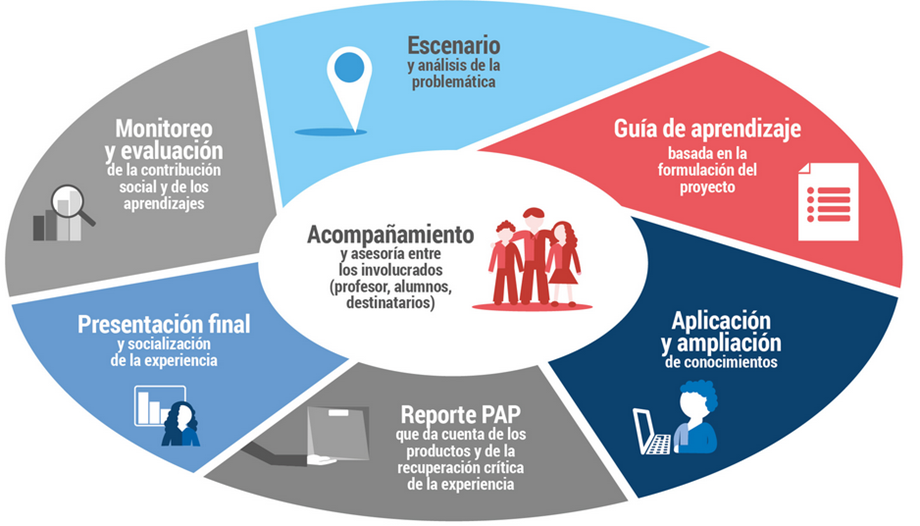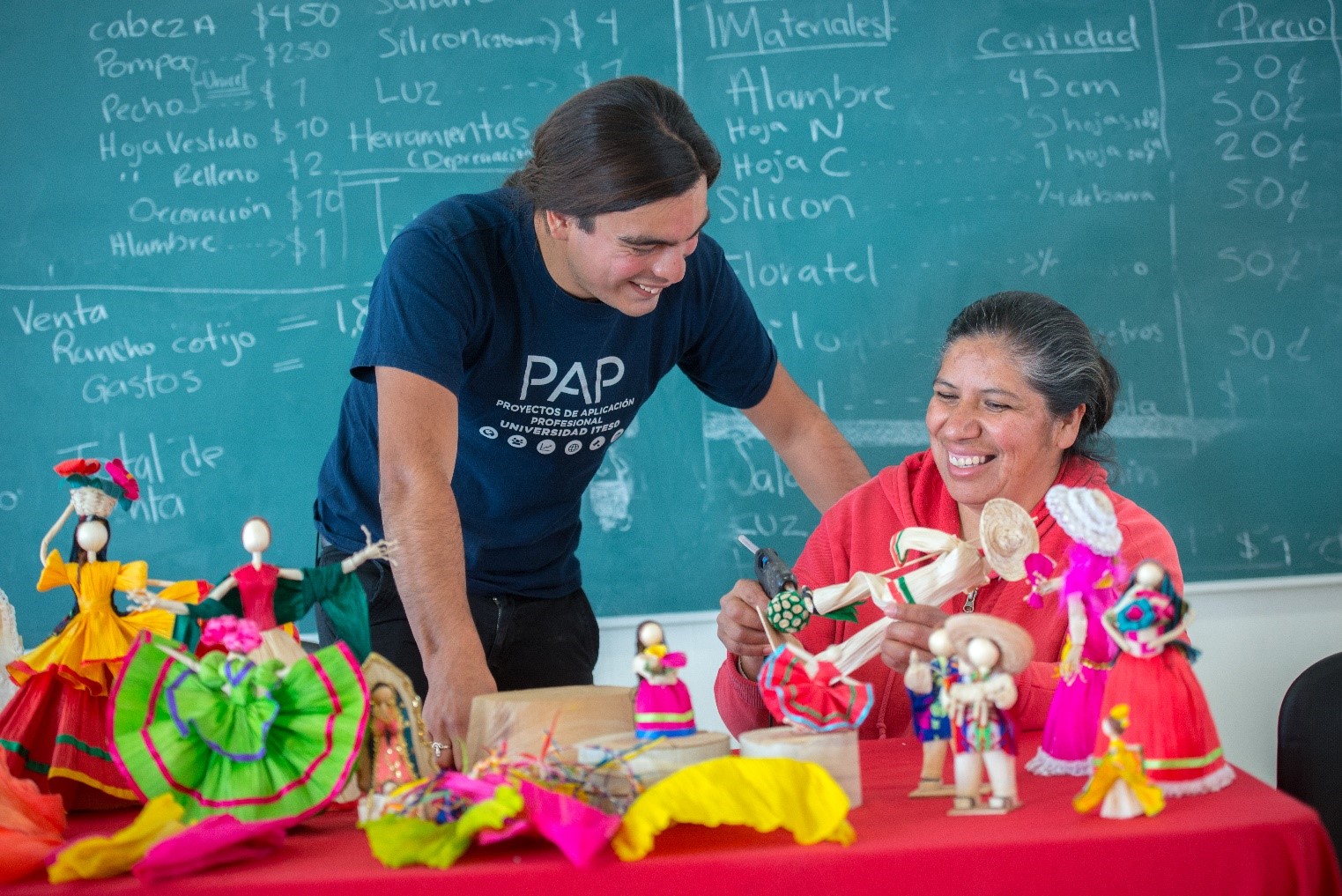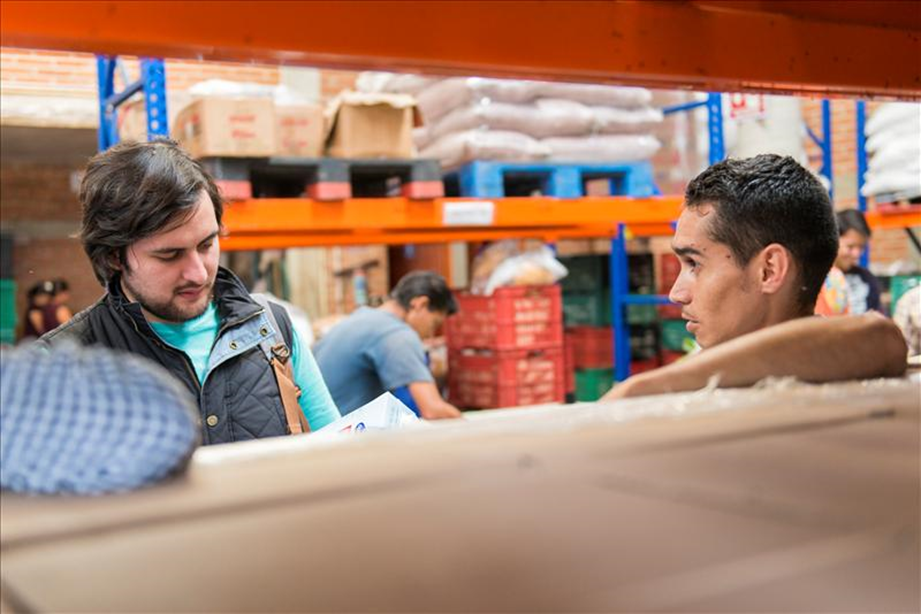Executive Summary
The social innovation presented below is situated in the spheres of academics and university engagement. Its specific setting is the Jesuit university of the city of Guadalajara, Mexico: ITESO (Instituto Tecnológico y de Estudios Superiores de Occidente).
In 2004, the academic community at ITESO felt driven to solidify itself as a committed, visionary, critical and proactive university that worked towards the resolution of social issues. In order to do so, ITESO incorporated PAPs, a pioneering addition to the curriculum of undergraduate study programs. According to the Academic Council (2005), PAPs or Professional Application Projects are programs oriented towards the intervention or transformation of specific social issues. PAPs are disciplinary, interdisciplinary, multidisciplinary, and transdisciplinary projects aimed at capitalizing on accumulated institutional experiences that have shown a commitment to society. They are organized projects that are oriented towards finding synergy between academic dependencies and a complex social horizon that demands comprehensive solutions.
This ground-breaking form of education consists of interdisciplinary teams of students led by a professor or specialized advisor. The teams transfer their knowledge to come up with alternatives and solutions to problems in a specific context.
Three substantive components of university formation are articulated through PAPs: social service, professional application. and the terminal option. This integration takes the form of learning experiences situated in real-world settings, preferably in communities with the greatest needs.
Thus, the integration of these components gives rise to a new composite strategy of experience-based learning that brings together project-based methodology, situated practices or on-site learning in real-world settings, service learning, and learning through team cooperation. PAPs prove that the best way to learn is by doing and contributing, which not only calls for the application of academic knowledge but also challenges students’ fields of knowledge to provide answers for actual social problems, which tend to be complex.
How do Professional Application Projects Operate?
PAPs require the articulation of several dimensions that together enable university students engaged in learning experiences to come up with solutions to real problems in a specific context.
The dimensions that must be managed and the basic criteria that this educational innovation requires to become operable are:
Curricular structure and academic management
A PAP is a project-based course from the professional knowledge area within undergraduate programs. Each student is required to take two 16-credit PAPs that are equivalent to 16 hours per week. The length of the project is limited to the academic term; however, if the project requires more time, it may be extended to subsequent terms, either with the same students if they decide to continue, or with the participation of new members. Students are free to choose the PAPs they wish to participate in, provided their degree program can meet the needs of the organization or the community in question, and the students have completed 70 percent of their degree credits.
Certain factors are taken into account for creating teams: the problems and characteristics of the setting, the disciplines that can contribute to solutions, the students’ interest in participating in the PAP experience, and the area of expertise or experience of the professor and/or advisors.
The benefit that students obtain by taking a PAP is the accreditation of:
Social service: 480 hours of social service are required to obtain a professional degree in Mexico. This particular university sees social service as a commitment to society, and an opportunity for students to undergo a deeply transformative experience.
Professional application: students put their professional knowledge and competencies into practice.
Terminal option: a way to obtain a degree by examining and critically reflecting upon the experience obtained through PAPs. This examination is presented in a report and socialized through a public presentation that highlights the achievements obtained during the project.
Administering social engagement
PAPS are ITESO’s main avenue of engagement with society. For the formulation of a PAP, the interested community, collective, or organization registers the issue that it is facing as well as possible solutions. This registry is known as a “preliminary project,” and is reviewed by university academics. If they rule in favor of the project, it can then be added to the PAP course catalogue for students to see and choose.
PAPs’ organizational structure is based on four strategic perspectives, defined on the basis of the most pressing issues in the specific setting as well as the objectives of study of the university’s degree programs:
- Solidarity-based economy and dignified work
- Identities and social inclusion
- Justice and democracy
- Sustainability and technology
These perspectives operate through nodes of articulation that bring together different actors (academics, students, beneficiaries, researchers, professors, among others), who work as a network to identify and construct solutions for complex problems.
In order to formalize PAP experiences amongst different actors, those involved sign a Collaboration Agreement that stipulates the commitments of the student, the organization and the university.
Knowledge Management
Students are the leading players in the development of the project; the professor’s role is to build bridges so that students can transfer their knowledge to solving the problem, thus re-signifying this knowledge. Some of the pedagogical strategies used by professors to make this happen are listening, problematizing, analyzing, problem-solving, debating, promoting interdisciplinary dialogue, designing and developing proposals for improvement, writing reports, among others.
PAPs use a specific learning methodology made up of the following components: insertion in the setting and problem analysis, the use of a learning guide based on project formulation, accompaniment amongst those involved, application and extension of knowledge, a PAP report, a final presentation, monitoring and evaluation.

(Clockwise from top: Setting and problem analysis, Learning guide based on project formulation, Application and extension of knowledge, PAP report on products and the critical recovery of the experience, Final presentation and socialization of the experience, Monitoring and evaluation of the social contribution and the learning.)
Credit: The author’s own formulation based on the work of ITESO PAP professors organized in communities of practice (2016).
Knowledge Management
Even though this type of management is the least explored up to now, we must acknowledge that it takes on special relevance in as much as PAPs represent a dynamic modality that involves diverse actors, settings, methodologies and knowledge, and that it is by managing the knowledge that emerges from a given modality that this knowledge endures, improves, is transferred ,and continues to evolve. Knowledge management can also be seen as a way to create communities of practice and learning to manage the knowledge that is dispersed among the different actors involved (students, professors, social actors) who, by coming together, give rise to the alternatives and answers to the problems that exist in the context.
Some Achievements of PAP Experiences
Their Contributions to the Social Context
More than 1,500 PAPs have been created since ITESO began the approach 12 years ago. More than 15,000 students have applied their knowledge in the following sectors: Social, 32 percent; Government, 15 percent; Economic, 38 percent, and Applied Research, 15 percent. This type of formation, which ITESO calls “engaged formation,” has enhanced students’ engagement with their surroundings and spurred them to develop professional knowledge with solidarity and commitment. The following are examples of actions undertaken in PAPs:
The social regeneration of public spaces; sustainable urban mobility; the preservation of artisanal techniques for textile design; psychological support for psychiatric patients; community management in indigenous communities; alternatives for better life quality in vulnerable populations; education for children in underprivileged contexts; nutrition for marginalized communities; consulting for small and micro businesses; solidarity-based economic alternatives; sensors and drones designed for effective management of the environment; technological developments in the areas of environmental, energy and food sustainability; technological development of industries; human rights protection; protection and aid for migrants; cultural and social transformation; museums and community, among others.

Artisanal Cooperative PAP.
Credit: Iteso/Luis Ponciano
Their Contribution to Students’ Formation
Students report that their most significant learning comes from having experiences of real-world contexts, sharing in the lives of people living in conditions of vulnerability, putting their academic knowledge into practice, working on multi- and interdisciplinary teams, and finding out what they are capable of as individuals and professionals. Some of the things that students have said about PAPs are: “The PAP…was a project that invited me not to simply throw up my hands at social problems;” “Knowing about this issue brings with it great social responsibility;” “Work here isn’t about getting a grade, but about coming up with real solutions for the people whom you are serving;” “The knowledge I gained… was put into this project, to generate solutions… for the immediate context;” and “I learned that transparency and honesty are qualities that should be promoted” (Professional Application Projects and Voluntary Service. Significative experiences for transformation, 2013).

PAP at the Food Bank.
Credit: Iteso/Roberto Ornelas
The Challenges of the PAP Experience
PAPs have been a source of lessons, obstacles, and challenges that to a greater or lesser extent have been overcome or are still in the process of being resolved. Some of these obstacles and challenges are listed below, along with the steps that have been taken or are planned:
- Asynchrony between the context and academia is a constant challenge that requires a flexible approach, planning, commitment, and the use of technology.
- Forming teams that answer to the needs of the context is a challenge that requires prior identification of the problem areas and of the profile of those involved and their fields. Teams require participants who commit freely to the project. These factors are critical for assembling successful teams.
- Re-signifying the role of the conventional professor, which originally centred on teaching. PAP teachers must become one more member of the group, one who accompanies, counsels, and validates the proposals of both the students and the social actors.
- Better coordination with other subjects that students take so that they come better prepared to address the context and the issues.
- Actions that promote the autonomy of social actors, as well as the sustainability of their projects, so that their continuity does not depend on the university’s engagement.
- Measuring the impact of projects through project follow-up and evaluation methodologies.
- Managing knowledge by creating communities of practice and learning, as well as repositories that promote the dissemination and use of knowledge and products generated by PAP experiences.
- Disseminating and sharing PAP experience for those who seek engaged formation with social commitment.
Author bio
Martha Gabriela Muñoz Padilla was born in the city of Guadalajara, Mexico. She earned a Bachelor’s Degree in Educational Sciences, and a Master’s Degree in Education and Knowledge Management from the Instituto Tecnológico y de Estudios Superiores de Occidente (ITESO), the Jesuit University of Guadalajara, as well as a Master´s Degree in Cooperation for Sustainable Development and Humanitarian Aid from the Universidad Pontificia de Comillas in Madrid. She is a professor and academic at ITESO’s Interdisciplinary Center for Social Formation and Engagement. She works on the formative processes of students and teachers who participate in projects that involve social engagement. She has collaborated in cooperatives and productive projects in indigenous and rural communities. Her main academic interests are learning and social service, education and communitarian processes, and the solidarity-based economy.
Works Cited
ITESO (2007). Modelo Educativo del ITESO. Mexico: author.
ITESO (2005). Criterios Generales y Propuestas operativas para los Proyectos de Aplicación Profesional. Mexico: Author.
Coordinación de Proyectos de Aplicación Profesional (2014). Proyectos de Aplicación Profesional y Voluntariado 2013. Guadalajara, Jalisco: ITESO.
More information about PAPs and their contributions is available at:


